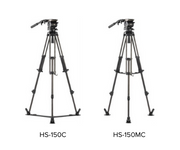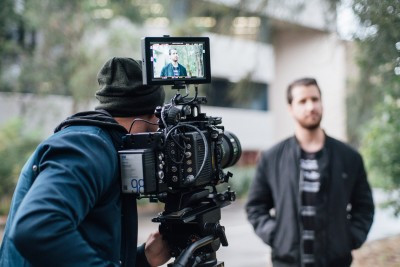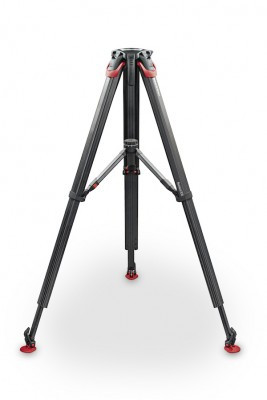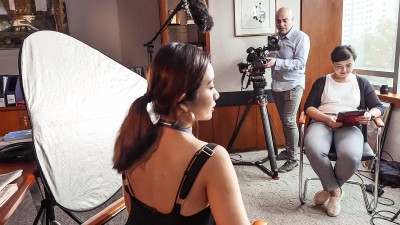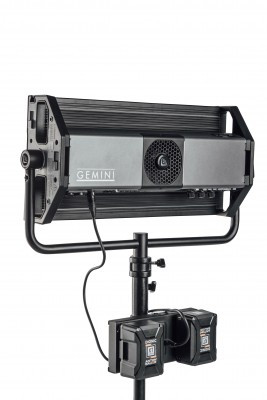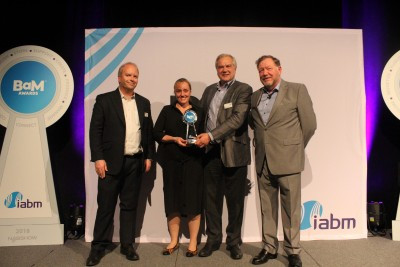Three legs good... better, best

Author: Kieron Seth#
Published 1st March 2013
by Kieron Seth
Fluid Sticks
Why do exhibitions and open days still exist in the social media mad world? Why do manufacturers and resellers maintain show rooms when information is immediately accessible online?
Simple: no matter which ‘celebrity’ DOP endorses a particular product, there’s no way to log on to assess how any camera balances on the shoulder, how easy it is to operate controls on a vision mixer, or whether a carry bag gives you quick access to your kit. The specs for the Blackmagic Design Cinema Camera and Arri’s Alexa may be similar: both deliver above HD resolution pictures, both deliver excellent dynamic range, both allow uncompressed recording. But they are very different beasts in the hand.
It’s the same with tripods. Libec, like most manufacturers, develop supports at every price level – in this case from around £150 to more than £3500. What explains this huge gulf? To weigh up the features and functions, it’s crucial to try them out in person, preferably with your own camera equipment. Only then will you know whether it has that all-important X factor that makes it the right piece of kit for you. In the meantime, here are a few things to bear in mind…
Payload
The £259 TH950DV is tailor made for small camcorders and DSLRs. It’s made for a maximum payload of 4KG, ideal for a camera such as the Canon 7D with batteries, sound recorder, F2.8 zoom lens, 8” monitor and viewfinder. At £450, the LX7 doubles the 950’s maximum load making it a good partner for a system such as a Canon XF305, complete with Atomos Ninja recorder and on-camera LED light. Moving up to the RS-450, a broadcast shoulder-mount camera with batteries and serious lenses can be supported up-to a maximum 12kg. Finally, the brand new premium priced RSPlus-850 is built for up-to 25 kilogrammes of 4K and 8K cinema equipment.
Legs, balls and heads
All manufacturers must make calculated judgements: weight versus sturdiness, cost versus performance. Libec focuses on aluminium construction for its strength, durability, weight and affordability. Some developers favour carbon fibre for its portability and strength. However, this has issues beyond the cost implications, such as a tendency to lack rigidity whereby tripod legs twist and distort fractionally when the camera is rotated. On release this torsion energy can cause the legs to snap back and unsettle the picture. But frankly, the only way to assess the rigidity and portability of the sticks, is to try them for yourself.
When it comes to the various heads available from Libec, there are marked differences. With the two lower cost units, there is little user control over the counter balance and drag features. They are designed to hold smaller cameras stable at any angle: achieving equilibrium may mean adjusting the position of the camcorder or DSLR on the plate. With the RS range, full manual settings are at the operator’s fingertips. Correctly configured, the camera will stay balanced at any angle and with any camera model with no perceptible slipping up or down. Similarly the manually controlled drag mode settings offer control over the ability of the camera to pan and hold still with no creep back.
Users have to consider the sophistication of the RS head against the added weight, slightly more involved set up, and higher cost.
Feet and braces
A rigid platform and strong head are wasted if the tripod does not grip the floor. Each Libec model is available with a telescopic mid or floor-level spreader to give further strength adjustable spreaders and the company supplies rubberized foot pads to maintain traction. All feet are not the same, however. Unlike the others, the RS range comes with double feet spikes – one chrome, one plastic depending on the shooting surface – for very grippy grounding.
Go armed
Details matter. Can the tripod cope with freezing temperatures and continue to deliver smooth, balanced operation? Are the legs and spreader easy to lock and adjust on the run? Can the quick release plate adapt to accommodate all lengths and widths of camera body? Does the tripod have a spirit level, is it illuminated and is it accurate? Your reseller should be able to help you find the answers and also help you decide how durable each tripod really is (ie how many are returned or need frequent running repairs).
This final consideration will be driven by a combination of the manufacturing standards and the cost of the tripod. Arguably, DV-type models are not built for repeated air transport. Lower end professional kit is not designed with extremes of weather in mind. From the calibre of components to the quality of the supplied carry bag, a support in the RS price bracket is intended to perform in every production environment for years to come: to prove the point it even ships with spare quarter and three eighth screws ready for typical camera operator mishaps.







